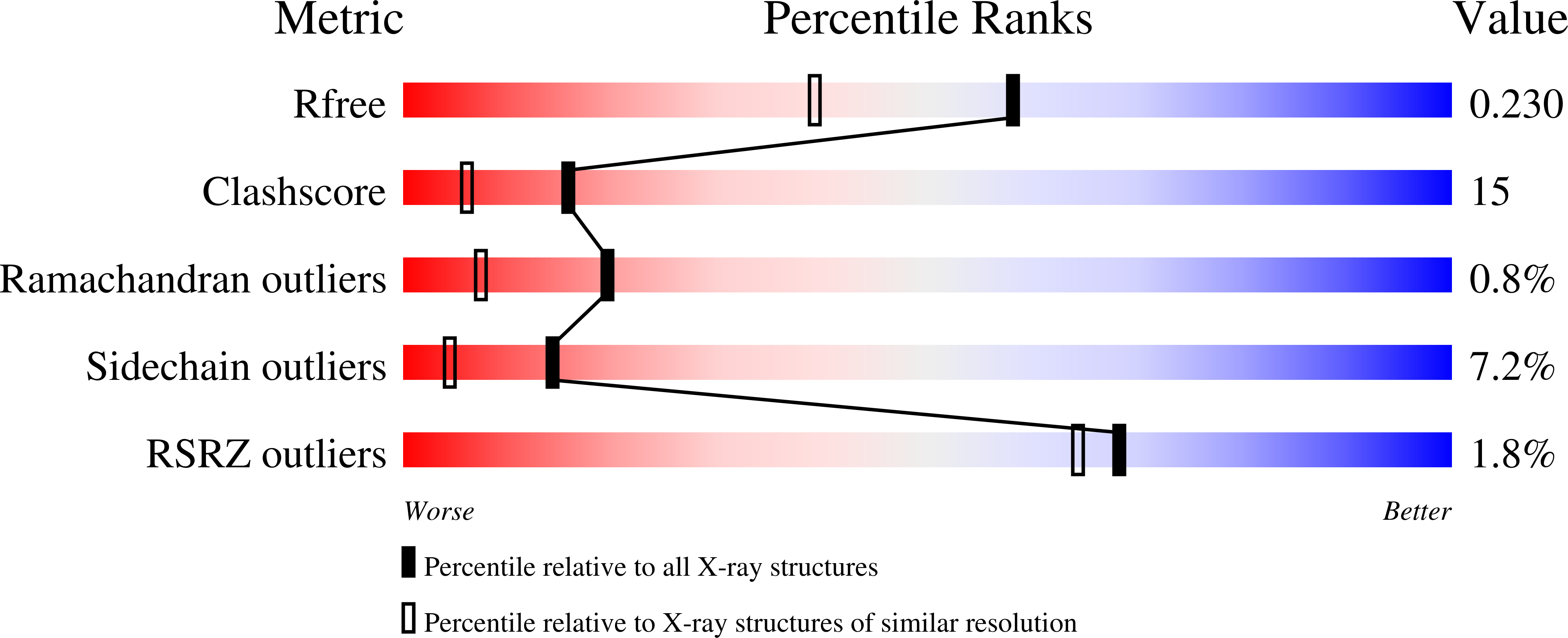Structural and functional insights into intramolecular fructosyl transfer by inulin fructotransferase
Jung, W.S., Hong, C.K., Lee, S., Kim, C.S., Kim, S.J., Kim, S.I., Rhee, S.(2007) J Biol Chem 282: 8414-8423
- PubMed: 17192265
- DOI: https://doi.org/10.1074/jbc.M607143200
- Primary Citation of Related Structures:
2INU, 2INV - PubMed Abstract:
Inulin fructotransferase (IFTase), a member of glycoside hydrolase family 91, catalyzes depolymerization of beta-2,1-fructans inulin by successively removing the terminal difructosaccharide units as cyclic anhydrides via intramolecular fructosyl transfer. The crystal structures of IFTase and its substrate-bound complex reveal that IFTase is a trimeric enzyme, and each monomer folds into a right-handed parallel beta-helix. Despite variation in the number and conformation of its beta-strands, the IFTase beta-helix has a structure that is largely reminiscent of other beta-helix structures but is unprecedented in that trimerization is a prerequisite for catalytic activity, and the active site is located at the monomer-monomer interface. Results from crystallographic studies and site-directed mutagenesis provide a structural basis for the exolytic-type activity of IFTase and a functional resemblance to inverting-type glycosyltransferases.
Organizational Affiliation:
Department of Agricultural Biotechnology and Center for Agricultural Biomaterials, College of Agriculture and Life Sciences, Seoul National University, Seoul 151-921, Korea.

















